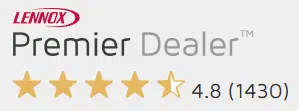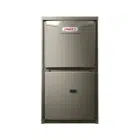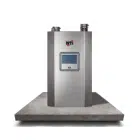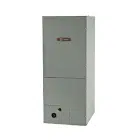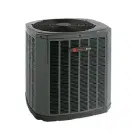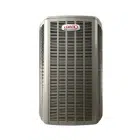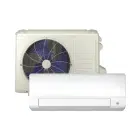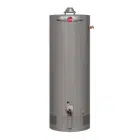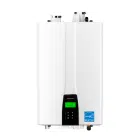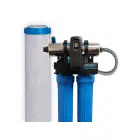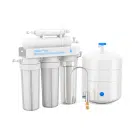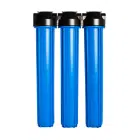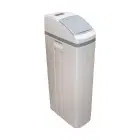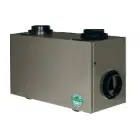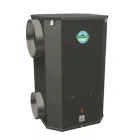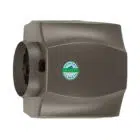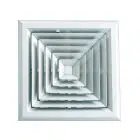
Table of Contents
Choosing the right furnace for your home can feel like a big decision, especially with all the technical jargon thrown at you. But understanding the differences between a single-stage furnace, two-stage furnace, and modulating furnace can make it easier—and can help you make a choice that not only keeps your home cozy during those brutal Canadian winters but also saves you money in the long run.
Let’s break down what each of these furnaces offers, how they work, and why one might be a better fit for your home than the others.
Why Choosing the Right Furnace Matters
Canadian winters are no joke. Keeping your home warm isn’t just about staying comfortable — it’s also about staying safe. When you have a reliable furnace that fits your home’s needs, it works efficiently without wasting energy. The right system means fewer breakdowns, lower energy bills, and consistent comfort. A lot of homeowners think, “A furnace is just a furnace,” but once you dig into the differences between a single-stage furnace, two-stage furnace, and modulating furnace, it becomes clear that not all heating systems are created equal.
Check out our previous article to find out how much is the installation cost of a new gas furnace.
Single-Stage Furnaces: The Basic Workhorse
A single-stage furnace is the simplest and most straightforward type. When your home gets cold, it kicks on at full blast, heating up your space, and then shuts off once it reaches the desired temperature. That’s it. One stage, on or off.
How It Works: Imagine you’re driving a car that only has one speed—fast. Every time you need to go somewhere, you can only floor it, and once you’ve arrived, you slam the brakes. It gets you where you need to go, but it’s not exactly efficient.
Pros
- Affordable upfront cost
- Simple mechanics mean fewer things can go wrong
Cons
- The constant on-and-off cycle can cause temperature swings in your home
- Less energy efficient, leading to higher monthly bills
For homeowners on a tight budget or those in smaller homes, a single-stage furnace can do the job. But if you’re someone who craves a more consistent temperature or wants to reduce energy waste, it might not be the best fit.
As technology advances, newer refrigerants are constantly being developed to meet stricter environmental standards and improve efficiency. While the ones mentioned above are the most common today, there are always new developments on the horizon. If you’re planning to invest in a new AC system, it’s worth asking your HVAC technician about future-proof refrigerants to ensure your system will last for years to come.
Two-Stage Furnaces: A More Flexible Option
Two-stage furnaces are like single-stage furnaces with a bit more finesse. Instead of just having “on” and “off,” they have two levels of heat output: high and low. Most of the time, the furnace runs on the lower setting, which is enough to keep your home comfortable. When it gets really cold, it kicks into high gear.
How It Works: Picture a car with two speeds—cruising and speeding. Most of the time, you’re just cruising along, keeping a steady pace. But if you hit a hill, you can speed up to maintain control. That’s how a two-stage furnace operates, adjusting its output based on how much heat your home needs.
Pros
- Better temperature control: fewer hot and cold spots
- More energy efficient than a single-stage furnace, especially on milder days
- Quieter operation since it runs on a lower setting most of the time
Cons
- Higher upfront cost than single-stage furnaces
- Not as efficient as modulating furnaces
For Canadian winters, a two-stage furnace can be a great balance between cost and comfort. It gives you more control over your home’s temperature without breaking the bank.
If you’re looking to explore our most popular furnaces, whether it’s a single-stage, two-stage, or modulating furnace, check out our official website via the link below.
Modulating Furnaces: Precision and Comfort at Its Best
Now, if you want the most advanced heating system out there, a modulating furnace is the way to go. These furnaces don’t just turn on and off, or even switch between two stages—they adjust their heat output continuously, in tiny increments, to match your home’s exact heating needs. This provides the most precise temperature control.
How It Works: This is like driving a car with a variable speed engine that adjusts based on the road conditions. You never have to worry about going too fast or too slow—it’s always just right.
Pros
- The best temperature control: your home stays within a degree of the set temperature
- Highest energy efficiency, translating to lower energy bills
- Quiet operation: because it’s not constantly turning on and off, you barely notice it’s running
Cons
- The most expensive option upfront
- Requires precise installation and maintenance to work optimally
For homeowners who value comfort and are willing to invest a bit more upfront for long-term savings and superior heating, modulating furnaces are unbeatable.
Modulating Furnaces: Precision and Comfort at Its Best
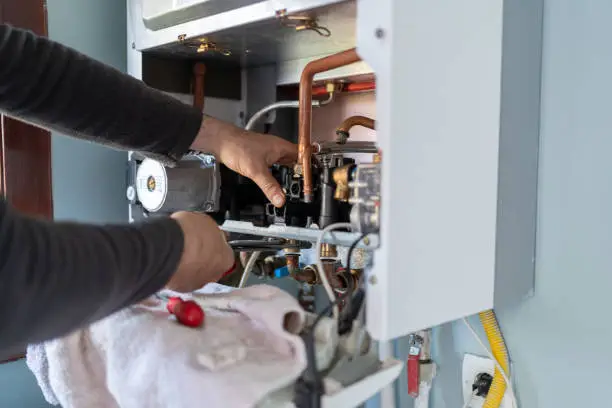
When it comes to energy efficiency and comfort, two-stage furnaces and modulating furnaces clearly outperform single-stage systems. But which one is right for you? It depends on how much you value comfort, how long you plan to stay in your home, and your budget.
Here’s a quick comparison of these furnace types to give you a better idea:
Furnace Type | Heating Stages | Comfort Level | Energy Efficiency | Upfront Cost | Operating Cost |
|---|---|---|---|---|---|
Single-Stage
| On/Off
| Basic | Low | Lowest
| Highest
|
Two-Stage
| Low/High
| Good
| Moderate to High | Moderate
| Moderate
|
Modulating
| Continuous | Excellent (precise)
| Highest | Highest | Lowest |
Which Furnace is Right for Your Home?
Now that you have a clearer understanding of how each type works, how do you choose? Let’s break it down based on some key factors.
- Budget: If you’re working with a tight budget, a single-stage furnace might make sense, especially if you don’t mind some minor temperature swings. But if you’re willing to spend a little more, the energy savings from a two-stage furnace or modulating furnace can pay off in the long run.
- Comfort: If comfort is your top priority, it’s hard to beat a modulating furnace. The ability to maintain a consistent temperature throughout your home, no matter the outside weather, can make a big difference during those frigid Canadian nights. Two-stage furnaces also provide a much better level of comfort than single-stage models, with fewer hot and cold spots.
- Energy Savings: Modulating furnaces win when it comes to energy savings. By running at a lower capacity most of the time, they avoid the energy spikes caused by turning on and off repeatedly. Two-stage furnaces offer decent savings as well, especially if you have long, cold winters. Single-stage furnaces are the least efficient, which will reflect in your monthly energy bill.
- Home Size and Insulation: A larger home or a poorly insulated one can benefit more from a two-stage furnace or modulating furnace because these systems can better handle the varying heating needs across different rooms. Smaller, well-insulated homes may get by just fine with a single-stage unit.
- How Long You Plan to Stay: If you’re planning to stay in your home for many years, investing in a two-stage furnace or modulating furnace can be worth it for the long-term energy savings. If you’re not planning to stay long, a single-stage furnace may be enough to keep you comfortable without the bigger upfront investment.
Find the top most energy-efficient solutions for your Canadian home in our previous article.
Let Us Help You Find the Perfect Furnace
Choosing the right furnace isn’t just about heating your home—it’s about finding the right balance between comfort, energy efficiency, and cost. Whether you’re looking to save on upfront costs with a single-stage furnace, aiming for better efficiency with a two-stage furnace, or craving the ultimate in comfort with a modulating furnace, HVAC Service Solutions is here to help.
Our team of experienced HVAC technicians can assess your home’s specific needs and recommend the perfect furnace to keep you warm all winter long. Plus, we’ll make sure it’s installed right, so you get the maximum benefit from your system. Reach out to us today, and let’s find the best solution for your home!
Frequent Asked Questions
What is the main difference between a single-stage and a two-stage furnace?
A single-stage furnace operates with one heating output—it’s either on at full capacity or off. This basic operation leads to more frequent on-and-off cycling and temperature fluctuations. A two-stage furnace, on the other hand, has two heating levels: low and high. Most of the time, the furnace runs at its lower setting, providing more even heat distribution and better energy efficiency. When the outside temperature drops significantly, the furnace switches to its high setting to maintain comfort. This more flexible operation reduces temperature swings, saves energy, and results in quieter operation. For many homeowners, the two-stage furnace offers a good balance between cost, comfort, and energy efficiency, especially in climates like Canada’s.
Why is a modulating furnace considered the most efficient option?
A modulating furnace is the most efficient option because it adjusts its heating output in small increments to match your home’s precise heating needs. Instead of operating in an “on” or “off” mode or at two levels, the modulating furnace constantly adapts, running at lower capacities most of the time. This not only provides superior temperature control—keeping the indoor temperature within a degree of the thermostat setting—but also minimizes energy use. Since the furnace isn’t cycling on and off frequently, it runs more efficiently and saves on operational costs. Additionally, because it’s constantly adjusting, it’s able to maintain a more comfortable indoor environment with fewer hot and cold spots. While the initial cost of a modulating furnace is higher, the energy savings over time can offset the upfront investment.
Which furnace is the most cost-effective over time?
While a single-stage furnace is the least expensive to purchase and install, it may end up costing you more in the long run due to its inefficient operation and higher energy usage. A two-stage furnace offers a better balance of upfront cost and long-term energy savings, making it more cost-effective for homeowners who plan to stay in their homes for many years. The modulating furnace, though the most expensive upfront, offers the best long-term savings in terms of energy efficiency and comfort. If you’re looking for the best value over time and want to reduce your energy bills significantly, a modulating furnace is often the best choice. Our team at HVAC Service Solutions can help you evaluate the costs and benefits to find the most cost-effective solution for your home.
Are two-stage furnaces good for cold climates like Canada?
Absolutely. A two-stage furnace is particularly well-suited for cold climates like Canada because of its ability to handle extreme temperature fluctuations. Most of the time, the furnace will operate on the lower setting, which is sufficient for milder days, providing a consistent and comfortable temperature. However, during harsh winter days, when the temperature drops dramatically, the furnace can switch to its high setting to provide the additional heat needed to keep your home warm. This two-stage operation also reduces wear and tear on the system, leading to fewer breakdowns and a longer furnace lifespan. For Canadian winters, a two-stage furnace offers better comfort, energy savings, and reliability compared to a single-stage furnace.
How do I know if I should choose a modulating furnace?
Choosing a modulating furnace is an excellent option if you prioritize comfort, energy efficiency, and long-term savings. If you want your home’s temperature to remain constant without the swings often associated with single-stage or two-stage furnaces, the modulating furnace is the best choice. It’s ideal for homeowners who plan to stay in their homes for many years, as the long-term savings from reduced energy bills will eventually offset the higher initial investment. It’s also a great choice for larger homes or homes with inconsistent insulation, where precise heat control is essential. If you’re unsure, reach out to HVAC Service Solutions for a professional assessment. Our team can help you evaluate your home’s specific heating needs.
Is it worth upgrading from a single-stage furnace to a two-stage furnace?
Upgrading from a single-stage furnace to a two-stage furnace can be well worth it, especially if you experience significant temperature swings in your home or if your current furnace is running inefficiently. Two-stage furnaces offer better temperature control, fewer on-and-off cycles, and quieter operation. Additionally, they are more energy efficient, which means your monthly heating bills could decrease. If your home is larger or has uneven heating distribution, upgrading to a two-stage furnace can also help eliminate hot and cold spots. While the upfront cost of a two-stage furnace is higher than a single-stage, the long-term benefits in terms of comfort, efficiency, and lower energy bills can make the upgrade a sound investment.
How much more does a modulating furnace cost compared to other types?
A modulating furnace is typically the most expensive option when compared to single-stage and two-stage furnaces. The higher cost comes from the advanced technology that allows the furnace to continuously adjust its output to meet your home’s heating demands precisely. While the upfront cost can be 30% to 50% higher than a two-stage furnace and even more compared to a single-stage furnace, the energy savings over time can help recoup this initial investment. Additionally, the comfort level provided by a modulating furnace is unmatched, as it virtually eliminates temperature fluctuations and provides a more even, consistent heat. If you plan to stay in your home long-term, the modulating furnace can pay for itself through energy savings and reduced maintenance costs.
Do modulating furnaces last longer than single-stage furnaces?
In general, modulating furnaces can last longer than single-stage furnaces due to their ability to run at lower capacities for most of the time. This means they undergo less stress compared to single-stage furnaces, which are constantly turning on and off at full capacity. The reduced wear and tear on the components of a modulating furnace can lead to a longer operational lifespan. That said, like all furnaces, proper installation and regular maintenance are critical to maximizing its lifespan. Regular servicing can help catch potential issues early, ensuring that your furnace operates efficiently for years to come. If you’re looking for a long-lasting solution, consider reaching out to HVAC Service Solutions for expert advice on maintaining your furnace.
Can a two-stage furnace improve indoor air quality?
Yes, a two-stage furnace can help improve indoor air quality compared to a single-stage furnace. Since two-stage furnaces run at a lower setting most of the time, they tend to circulate air more frequently. This increased air circulation can help your home’s HVAC system filter out dust, allergens, and other pollutants more effectively. Additionally, because two-stage furnaces don’t cycle on and off as often as single-stage units, the air filter works more consistently, improving indoor air quality. While a furnace’s primary function is heating, the increased air movement from a two-stage furnace can contribute to a cleaner, healthier indoor environment.
Is it harder to maintain a modulating furnace than other furnace types?
Maintaining a modulating furnace can be slightly more complex than maintaining a single-stage or two-stage furnace, simply because the technology is more advanced. However, with regular professional maintenance, a modulating furnace can run smoothly and efficiently for many years. Routine tasks like checking and replacing filters, cleaning components, and ensuring proper calibration of the modulating system are essential. The key to maintaining a modulating furnace is hiring qualified HVAC professionals who understand the intricacies of this type of system. Proper maintenance not only ensures peak performance but also helps extend the lifespan of the furnace.
Share
